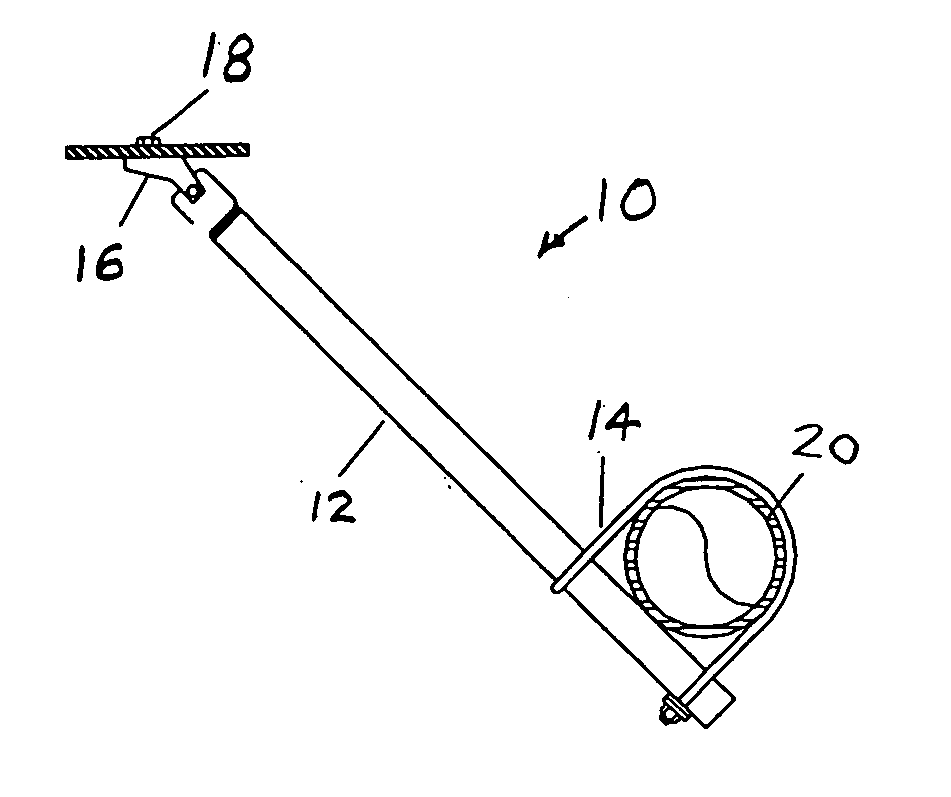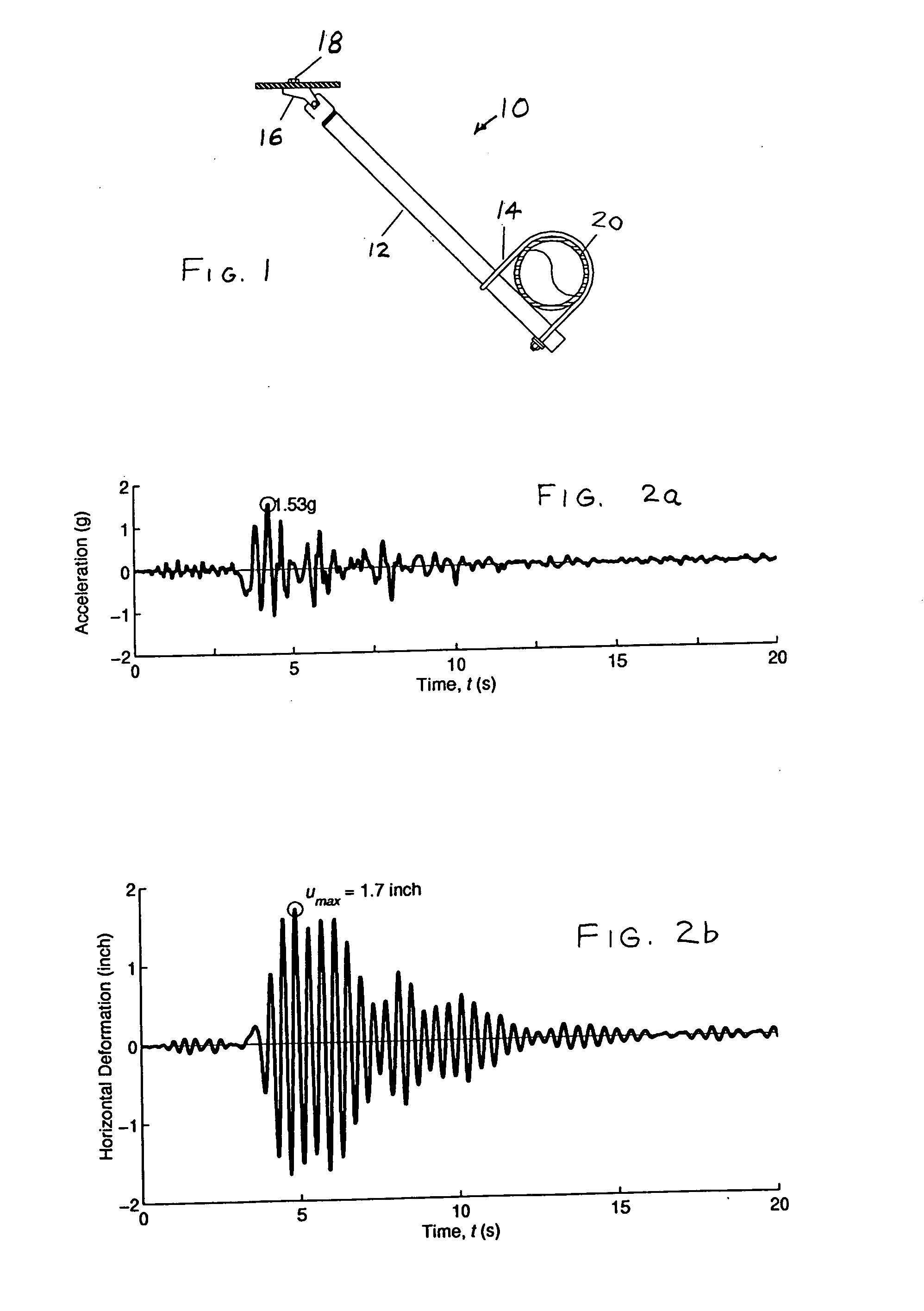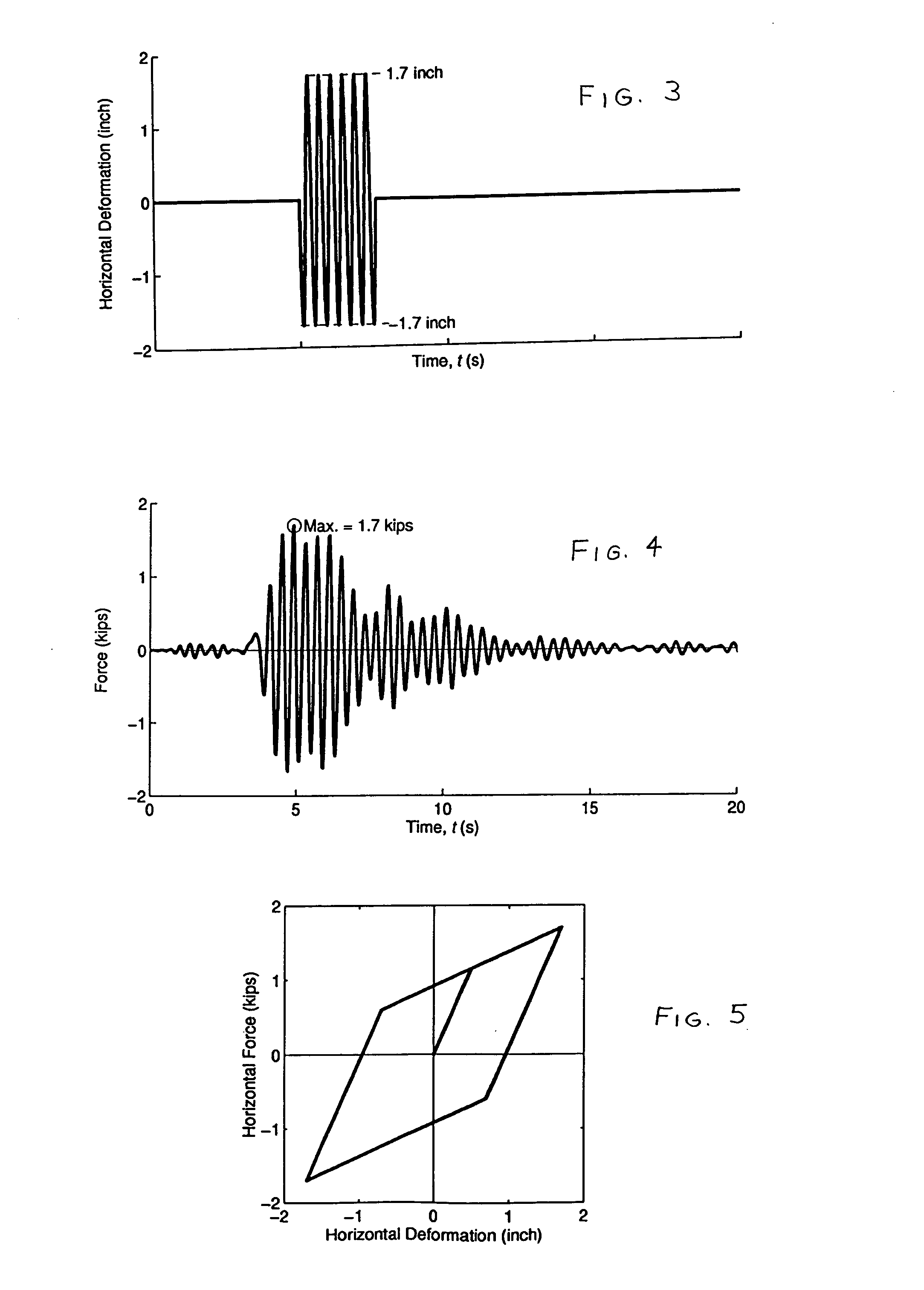Method of testing seismic braces
a technology of seismic braces and braces, applied in the field of method of testing braces, can solve the problems of significant degradation of brace components in strength, stiffness, energy dissipation, etc., and achieve the effect of simple, yet rational protocol, degradation of strength, stiffness, and energy dissipation
- Summary
- Abstract
- Description
- Claims
- Application Information
AI Technical Summary
Benefits of technology
Problems solved by technology
Method used
Image
Examples
Embodiment Construction
The following description is written in terms of sprinkler pipes in a building, but the present invention also encompasses objects other than sprinkler pipes and fixed structures other than buildings.
The components of a “rigid” seismic brace 10 are shown in FIG. 1. These are a brace pipe 12, a pipe-attached component 14, a building-attached component 16, including a fastener 18. The pipe-attached component 14 is attached to a sprinkler pipe 20. The pipe-attached component 14, the building-attached component 16, or both can comprise a single member, a plurality of inseparable members, or a subassembly of separable members. The deformation history for the brace 10 can be obtained by dividing the force history by the stiffness of the brace assembly. Under strong shaking, the seismic loads are so large that the brace 10 is likely to yield. Its stiffness, therefore, depends on the applied load.
FIG. 2a shows the acceleration history at the roof of a 6-story hospital building shaken by...
PUM
 Login to View More
Login to View More Abstract
Description
Claims
Application Information
 Login to View More
Login to View More - R&D
- Intellectual Property
- Life Sciences
- Materials
- Tech Scout
- Unparalleled Data Quality
- Higher Quality Content
- 60% Fewer Hallucinations
Browse by: Latest US Patents, China's latest patents, Technical Efficacy Thesaurus, Application Domain, Technology Topic, Popular Technical Reports.
© 2025 PatSnap. All rights reserved.Legal|Privacy policy|Modern Slavery Act Transparency Statement|Sitemap|About US| Contact US: help@patsnap.com



